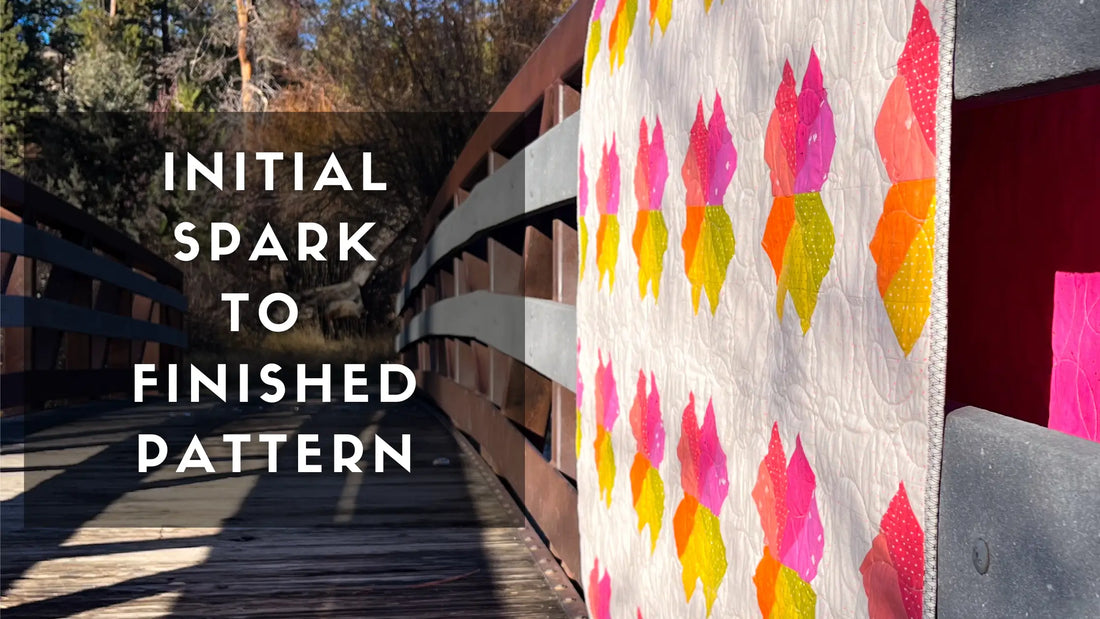
Initial Spark to Finished Pattern
Share
Or should we say 2022 to 2024!
Yes, that's right—it took two years to bring the Multiplied quilt pattern into the world.
(...And believe it or not, there are patterns coming out soon that were first designed in 2021! At this point, I have to remind myself—come on, get it together and write those patterns!!!)
As a designer, inspiration strikes constantly, with ideas flowing freely into sketchbooks, design boards, and digital files. Yet, only a handful come to fruition—evolving from rough sketches into finished quilts and, eventually, into polished patterns ready to be shared.
The process from that first spark of an idea to a complete, published pattern can be surprisingly long. Of all the quilt ideas that emerge, only a handful reach completion. There are patterns, like Multiplied, that wait for the right time, the right energy, and the right creative push to finally take shape, proving that creativity moves at its own pace.
Once an idea is chosen and it feels like the one, the next challenge is figuring out the best way to construct the quilt. And as any quilter knows, there isn’t just one way to build a design—there are countless techniques to achieve the same result.
For example, when working with half-square triangles, you can make them one at a time, two at a time, or even eight at a time, depending on the method used. Each approach has its own benefits, whether it’s greater accuracy, time efficiency, or ease of assembly. These decisions matter not just for the final look of the quilt, but for the overall quilting experience.
One key factor in choosing a construction method is fabric efficiency. Quilters are intentional about their fabric use—not only for cost reasons but because wasting fabric is something we all try to avoid. The goal is always to find the best balance between ease of construction, precision, and making the most of every piece of fabric. Finding that sweet spot is part of what makes quilt design both a challenge and an art.
Once the construction method is decided and the fabric requirements are calculated, the next step is translating everything into the preferred design programs: Adobe Illustrator and Adobe InDesign.
This part of the process is entirely manual—these programs don’t do the work for you. Every element, from block layouts to cutting diagrams, has to be carefully drawn, arranged, and formatted by hand. Illustrator helps with creating clear, precise diagrams that visually guide quilters through each step, while InDesign helps structure the pattern into a polished, easy-to-follow format.
Next comes the crucial phase of editing and collaborating with pattern testers to refine the design. This process ensures that the pattern instructions are written in a clear, concise, and easy-to-follow manner. By incorporating feedback from testers, any ambiguities or potential issues can be identified and corrected, resulting in a polished, well-structured, and flawless pattern design.
All of this is a meticulous process, requiring both creativity and technical precision. The goal is to make sure that when someone picks up the pattern, they can follow it seamlessly—without confusion or frustration—so they can focus on what they love most: quilting.
It brings great joy to see Multiplied come to life and be available for you to make your own. You can customize and infuse your personal touch and creativity into every design decision, creating something truly unique and special.


Happy Quilting!
